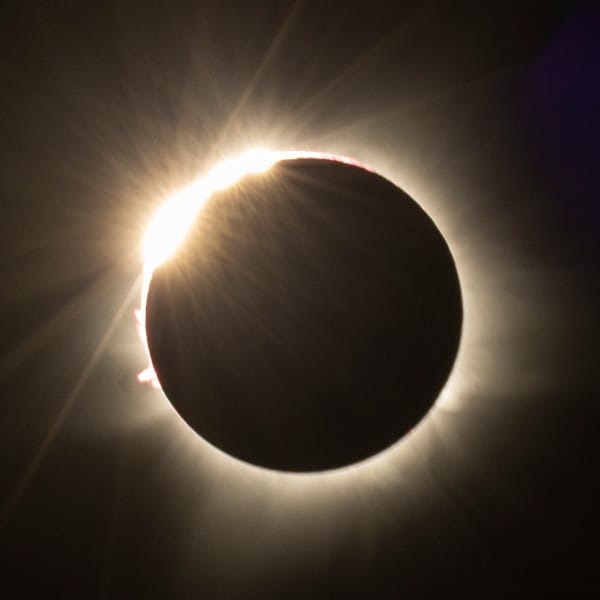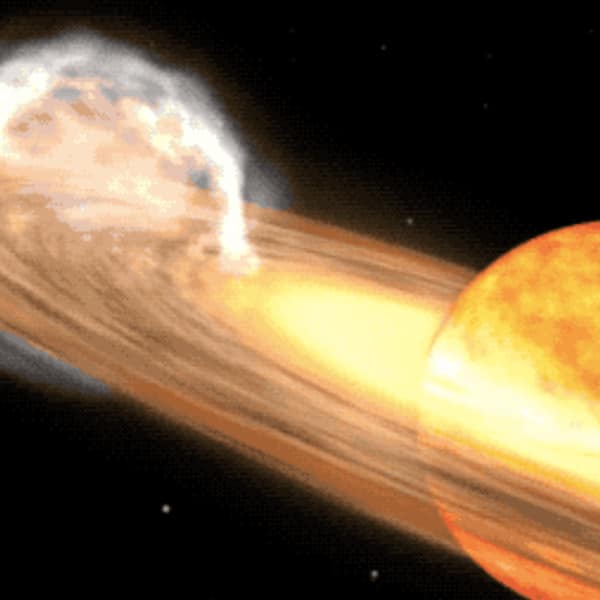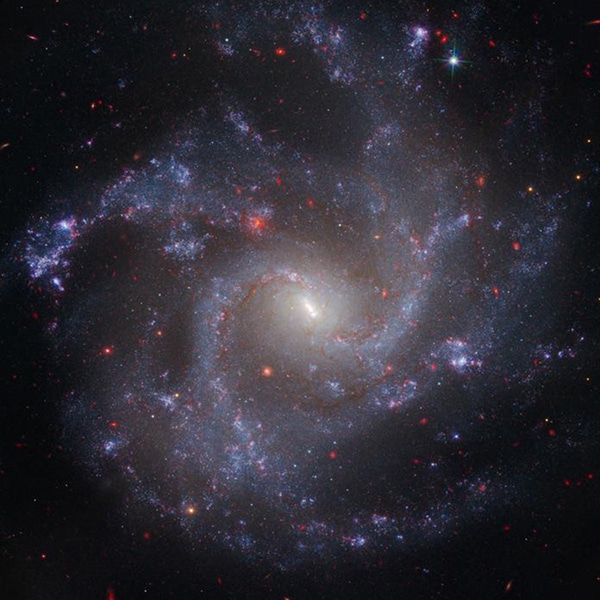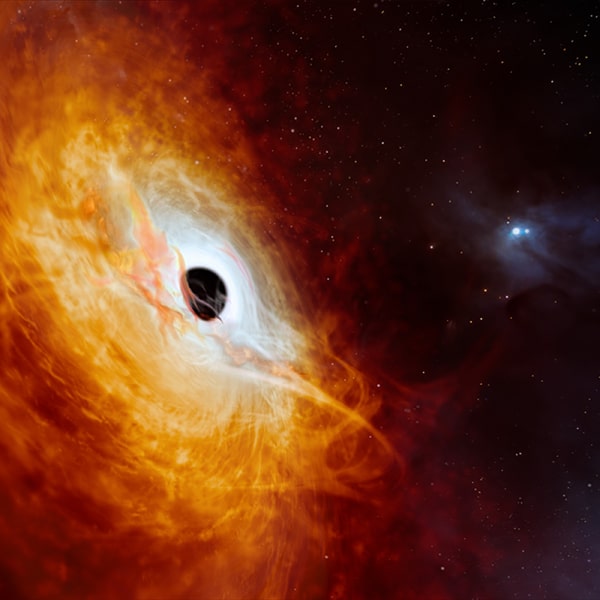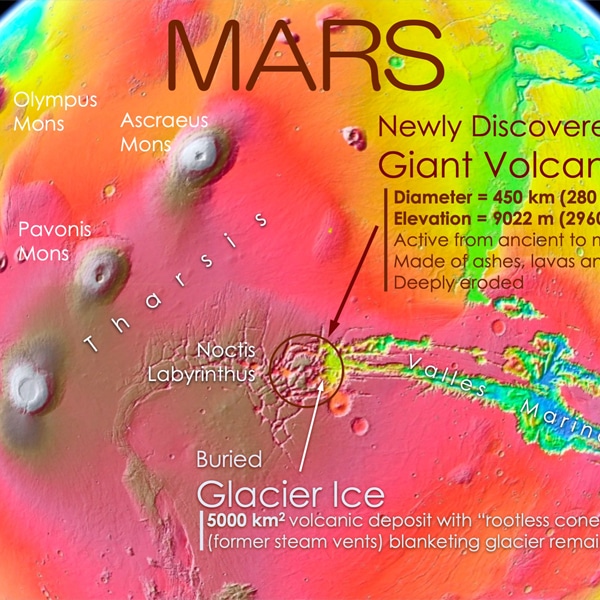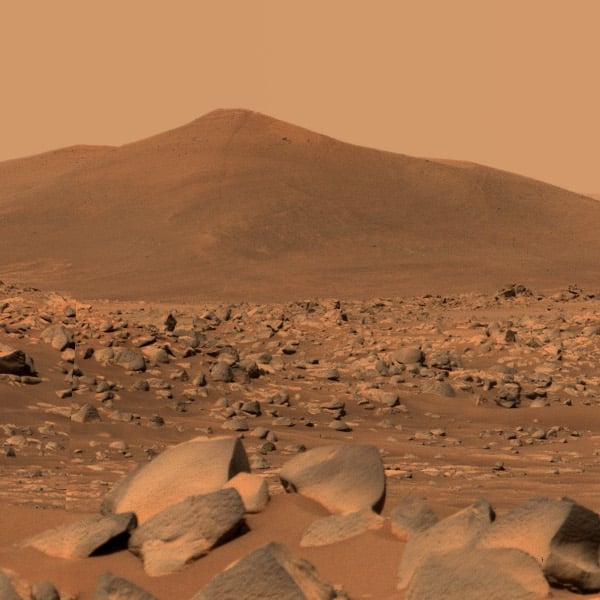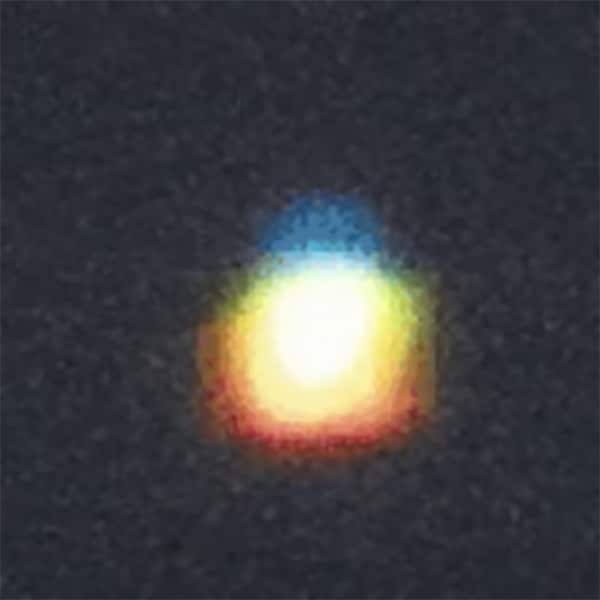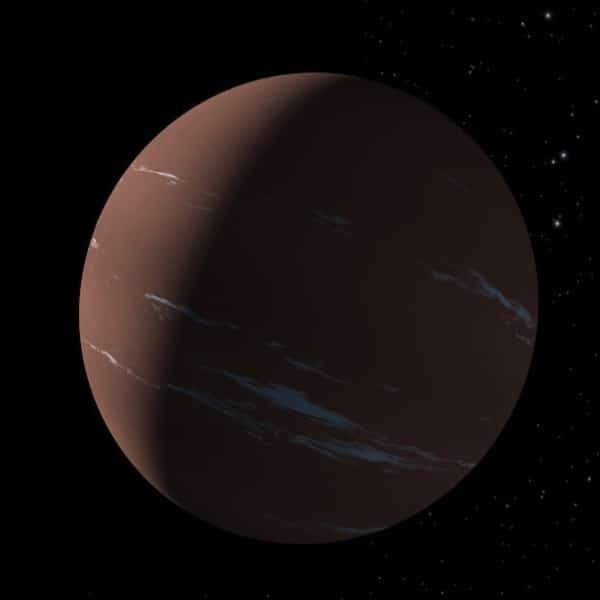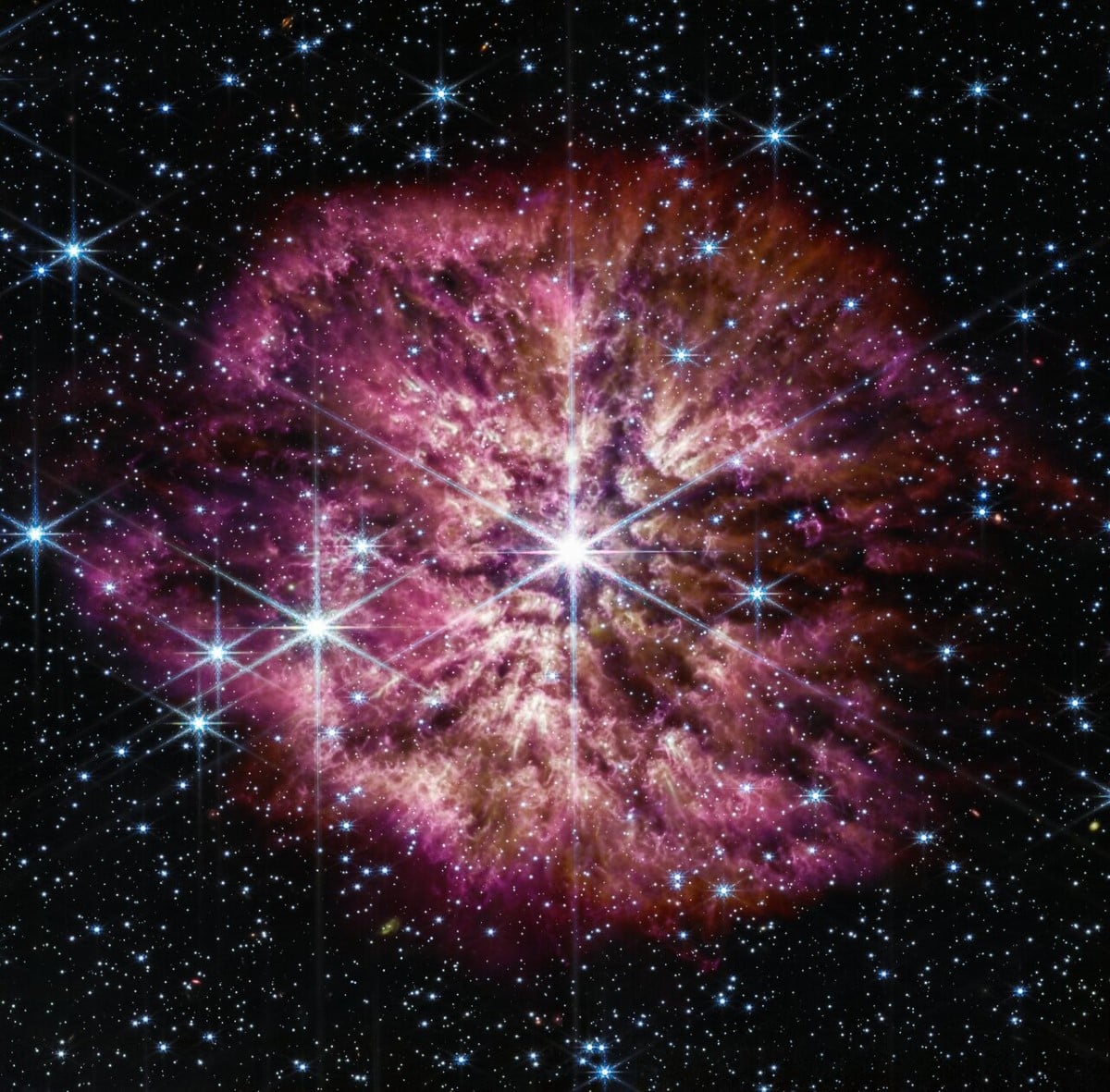
Photo: NASA, ESA, CSA, STScI, Webb ERO Production Team
In the short time since it was launched into outer space, the James Webb Space Telescope (JWST) has been dazzling the public with stunning views of the universe. A newly released photo by NASA is a reminder of how much incredible imagery is yet to come. This JWST photo of a Wolf-Rayet star named WR 124 is a rare look at one of the luminous—and massive—stars that exist. And it's a good thing, as this star will soon explode.
Located 15,000 light-years away in the Sagittarius constellation, WR 124 was captured by the telescope in rich detail in June 2022. One of JWST's first observations, the imagery gives an unprecedented look at a Wolf-Rayet star. While these stars are incredibly bright due to their high temperatures, they're rare to see because they signal the end of the road in a star's life.
These enormous stars are showing their last burst of activity before they die out. NASA states that they “live fast and die hard” before exploding into a supernova. Part of this phase involves shedding their outer layers, which gives them their signature halos of gas and dust. To put into perspective how large these giants are, WR 124 is 30 times the mass of the Sun and has shed 10 Suns' worth of material thus far. As this material cools and blows away from the star, it forms cosmic dust.
JWST's imaging capabilities allow it to see through this dust and let researchers peek behind the curtain, so to speak. Dust is an essential part of the universe for several reasons. According to NASA: “It shelters forming stars, gathers together to help form planets, and serves as a platform for molecules to form and clump together—including the building blocks of life on Earth. Despite the many essential roles that dust plays, there is still more dust in the universe than astronomers’ current dust-formation theories can explain. The universe is operating with a dust budget surplus.”
Scientists are particularly interested in these images because massive stars often race through—or skip—this final phase before going supernova. JWST's detailed imagery is a rare look at exactly what goes on in this critical part of their life cycle and allows astronomers to gather critical information about how dust is produced. This knowledge can then be applied to theories of how our early universe developed.
The images JWST produced include a composite photo that combines images from its Near-Infrared Camera (NIRCam) and Mid-Infrared Instrument (MIRI). The NIRCam photographed WR 124's stellar core and gas close to it, while MIRI then focused on the surrounding gas and dust.
NASA has released a spectacular James Webb Space Telescope photo of a massive star right before it goes supernova.
There is beauty in transience. 🌸
Webb’s stunning image of a super bright, massive Wolf-Rayet star calls forth the ephemeral nature of cherry blossoms. The Wolf-Rayet phase is a fleeting stage that only some stars go through, soon before they explode: https://t.co/ZOAmKgtshI pic.twitter.com/fC0tL24iUe
— NASA Webb Telescope (@NASAWebb) March 14, 2023
This second photo captured by JWST's MIRI shows the thick layer of gas and dust surrounding the enormous Wolf-Rayet star.
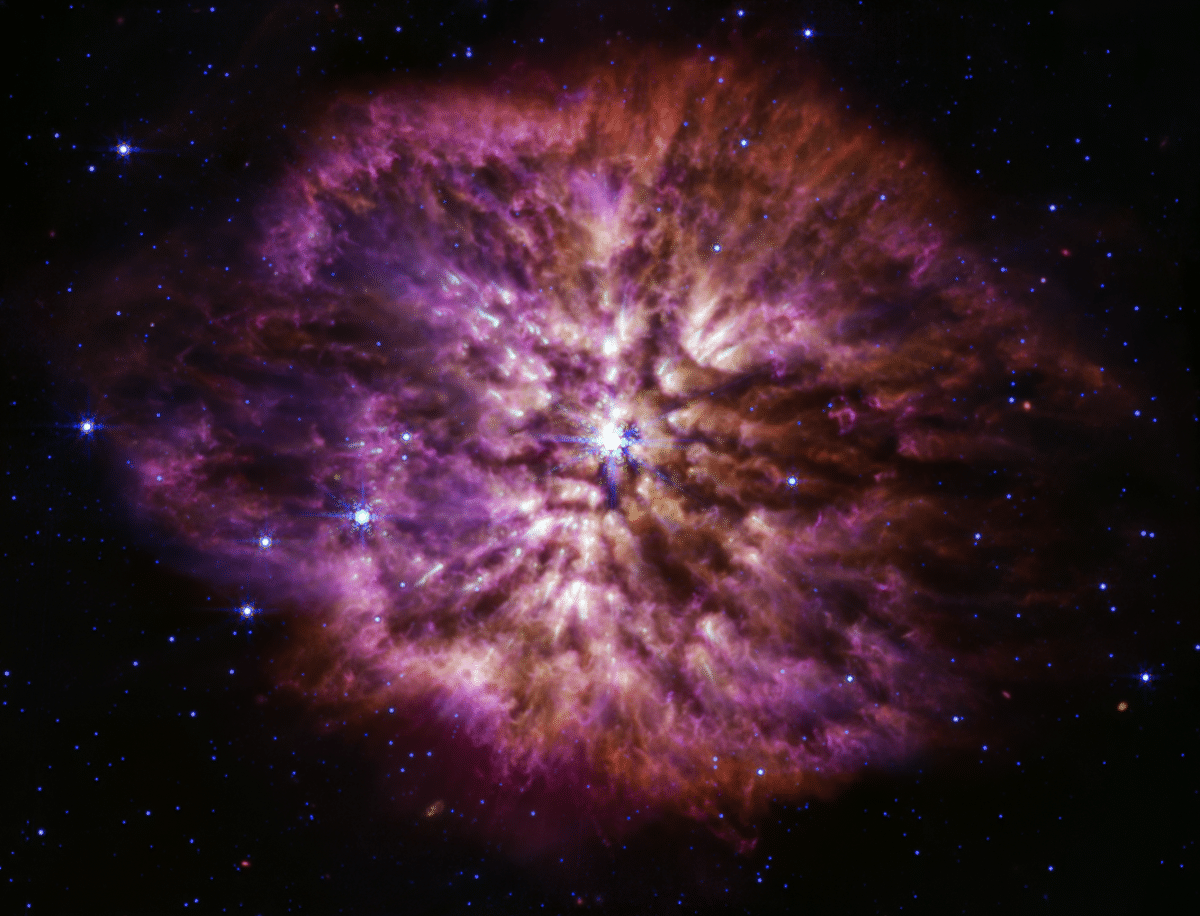
Photo: NASA, ESA, CSA, STScI, Webb ERO Production Team










































































